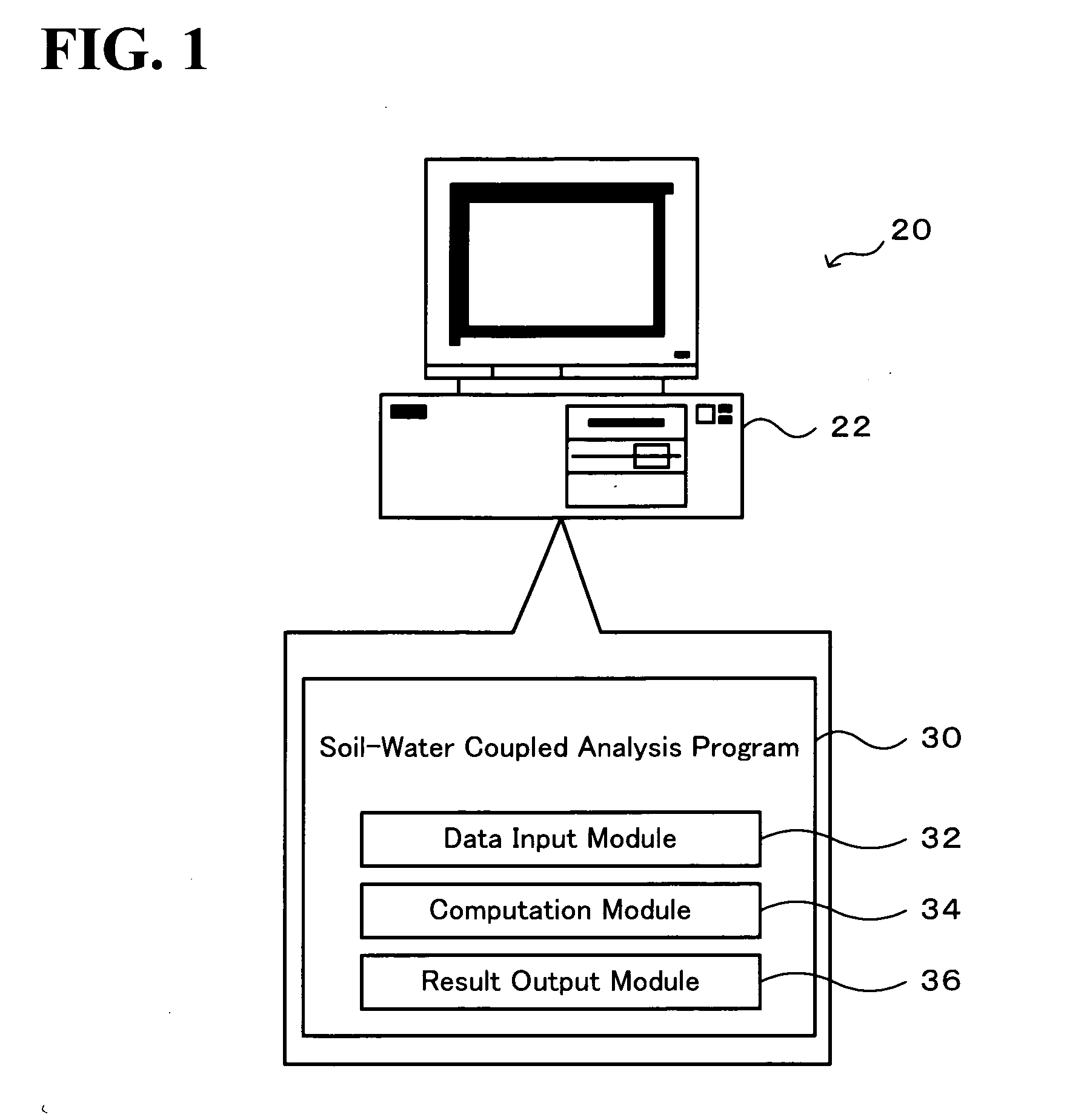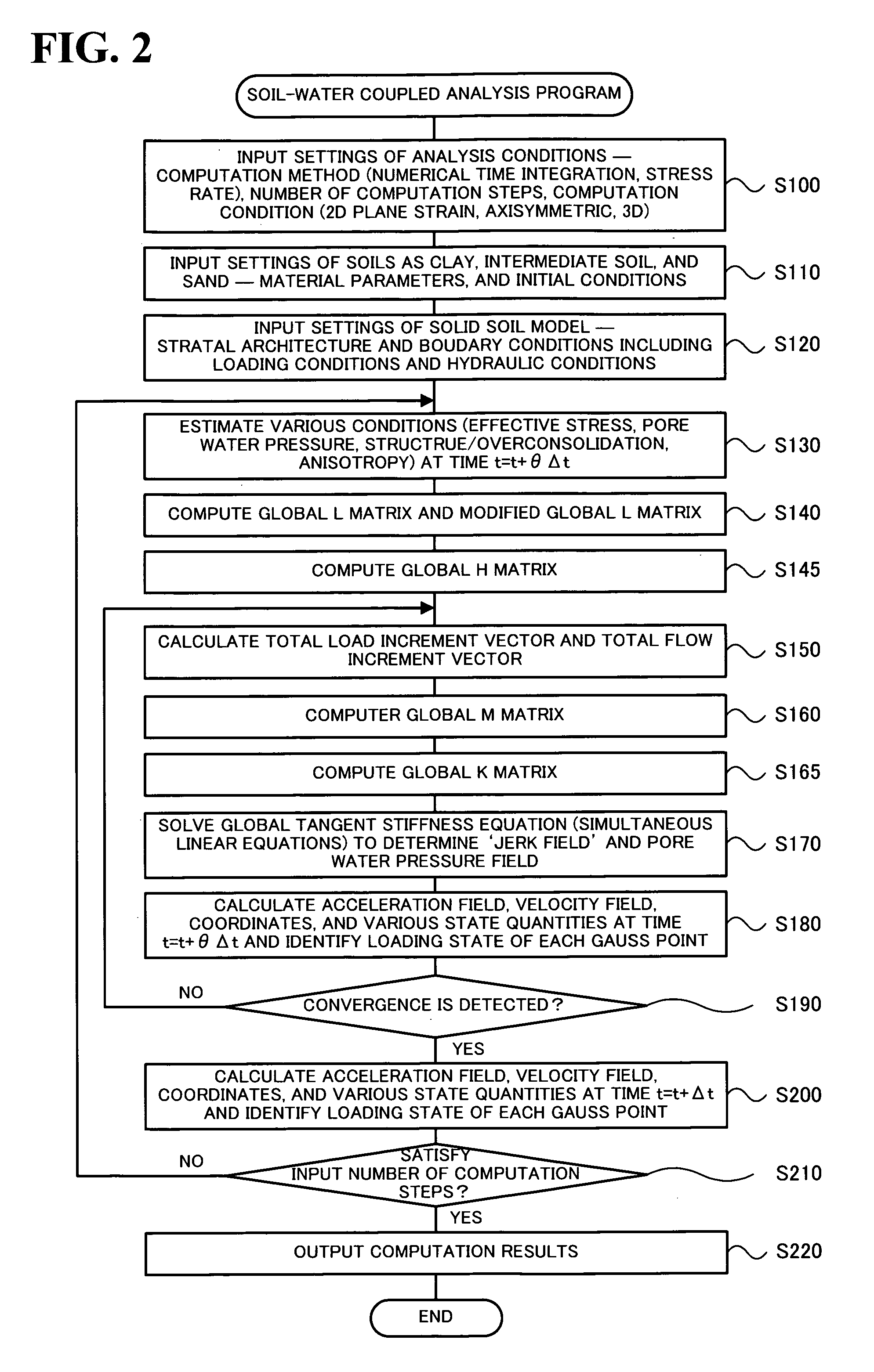Soil-Water Coupled Analyzer and Soil-Water Coupled Analysis Method
a soil-water coupled analyzer and coupled analysis technology, applied in the field of soil-water coupled analyzer and corresponding soil-water coupled analysis methods, can solve the problems of prior art soil skeleton analysis programs that are not applicable to layered soil foundations of sand and clay, liquefaction of loose sand foundations, and inability to accurately analyze intermediate soils. to achieve the effect of tangent stiffness of soil skeleton
- Summary
- Abstract
- Description
- Claims
- Application Information
AI Technical Summary
Benefits of technology
Problems solved by technology
Method used
Image
Examples
Embodiment Construction
[0035]One mode of carrying out the invention is described below in detail as a preferred embodiment with reference to the accompanied drawings.
[0036]FIG. 1 schematically illustrates the configuration of a soil-water coupled analyzer 20 in one embodiment of the invention. The soil-water coupled analyzer 20 of the embodiment is constructed by installing a soil-water coupled analysis program 30 as application software in a general-purpose computer 22. The soil-water coupled analysis program 30 includes a data input module 32 that inputs data for setting the analysis conditions, the soil properties, and a solid soil model, a computation module 34 that analyzes the mechanical behaviors of saturated soil from the input data according to an elasto-plastic constitutive equation, and a result output module 36 that outputs the result of the analysis.
[0037]FIG. 2 is a flowchart showing a series of processing according to the soil-water coupled analysis program 30. The processing of the soil-wa...
PUM
| Property | Measurement | Unit |
|---|---|---|
| external forces | aaaaa | aaaaa |
| velocity | aaaaa | aaaaa |
| stress rate | aaaaa | aaaaa |
Abstract
Description
Claims
Application Information
 Login to View More
Login to View More - R&D
- Intellectual Property
- Life Sciences
- Materials
- Tech Scout
- Unparalleled Data Quality
- Higher Quality Content
- 60% Fewer Hallucinations
Browse by: Latest US Patents, China's latest patents, Technical Efficacy Thesaurus, Application Domain, Technology Topic, Popular Technical Reports.
© 2025 PatSnap. All rights reserved.Legal|Privacy policy|Modern Slavery Act Transparency Statement|Sitemap|About US| Contact US: help@patsnap.com



